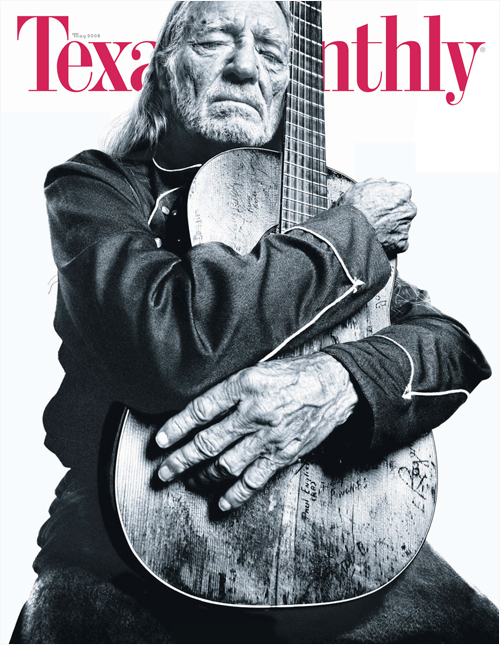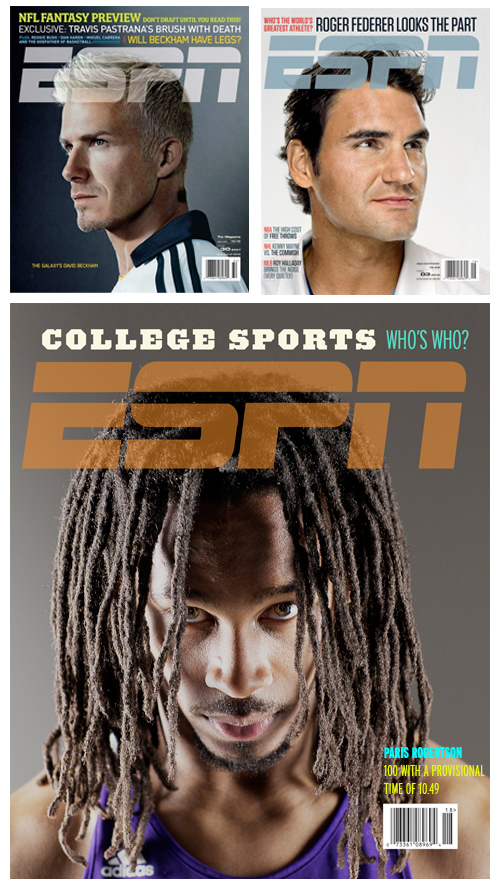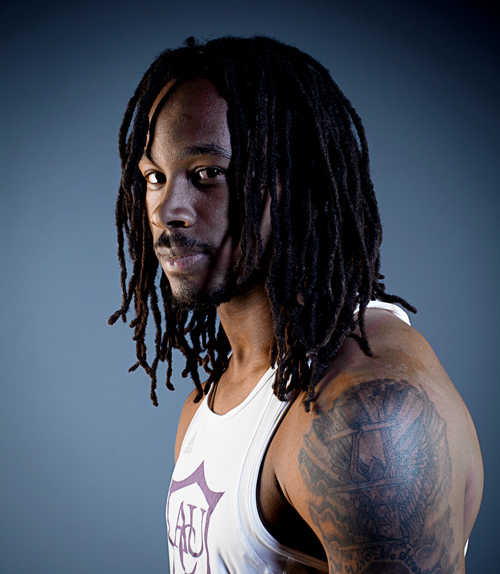Project 2: Consumer Magazine Editorial Portrait


Brief
You’ve been asked to produce a “cover story” in the style of a popular consumer magazine that you like. You will submit a copy of the magazine along with your assignment for comparison. In this assignment, you will produce one “cover” portrait photo, and in addition, you will produce two more “inside” story shots, either black-and-white or color, one of which will be a performance shot (environmental), and the other a more relaxed “everyday person” portrait that lets us see something of the person behind the performance role.
Criteria
Your choice of image manipulation must match the appearance and needs of the publication you choose to emulate. Lighting, styling, makeup, location, etc. will be dictated by the norms of the publication. (studio vs. location, soft light vs. hard, etc)
In depicting your subject, you should be mindful of the subject’s public image (in this assignment, you may need to artificially define this “public image” beforehand) and take whatever steps you deem necessary to create a suitable likeness. Consider what kinds of poses, props, and/or activities are usually shown on your target magazine’s cover, and then what kinds of shots are consistent with the editorial content of the inside story. When you turn in the assignment, you will designate both the cover shot and the “lead” shot of the inside story. You may find it helpful to write captions for the photos with an imagined article in mind.
The nature of consumer editorial portraiture centers on celebrities, or at least people of particular notability. There is frequently an emphasis on performers of one sort or another, be it show biz or politics or science. The performance aspect may be overt or implied, but it is usually there. You will do well to seek out as a subject someone who either is a performer, or has aspirations to be in the public eye. Try to discover the specific nature of this desire and draw upon it for your work.
Remember that the essential purpose of editorial portraiture—and the stories these pictures accompany—is to explore and/or report on the life and personality of the subject. Action shots may be included to illustrate what this person does, but such photos alone cannot give the viewer a sense of having “connected” with the subject. This is the province of the more confrontational
portrait photograph.
For the cover shot, keep in mind the need to draw consumer attention to the magazine on the store checkout rack. Keep in mind such design elements as publication name, content teaser headlines, scanner barcode and mailing label space. Obviously, the cover shot will be vertical and will allow sufficient room for cropping according to art directors’ needs. Inside shots are less restrictive, but should generally follow what appear to be the publication’s preferences for vertical or horizontal, single or multiple column usage.
The level of visual sophistication and professionalism should be as high as you can make it. These exercises should feel as real as possible to you and your audience.
You turn in (digitally only, PDF)
• 3 Final images (by themselves)
• Cover comp with portrait and magazine masthead, and cover lines if needed. Also include a side-by-side comparison.*
• Spread comp with other two portrait shots
Project is due on Thursday, Oct 06 – be ready for presentation and critique
Attention! In order to proceed with this project, you MUST first obtain consent from the person you will photograph, by asking he or she to sign the Model Release Form. Your project won’t be accepted without it.
*Side-by-side comparison

Other cover shots samples

More on portrait photography
1. Alter Your Perspective
Most portraits are taken with the camera at (or around) the eye level of the subject. While this is good common sense – completely changing the angle that you shoot from can give your portrait a more interesting factor.
Get up high and shoot down on your subject or get as close to the ground as you can and shoot up. Either way you’ll be seeing your subject from an angle that is bound to create interest.
2. Play with Eye Contact
It is amazing how much the direction of your subject’s eyes can impact an image. Most portraits have the subject looking down the lens – something that can create a real sense of connection between a subject and those viewing the image. But there are a couple of other things to try:
A. Looking off camera – have your subject focus their attention on something unseen and outside the field of view of your camera. This can create a feeling of candidness and also create a little intrigue and interest as the viewer of the shot wonders what they are looking at. This intrigue is particularly drawn about when the subject is showing some kind of emotion (ie ‘what’s making them laugh?’ or ‘what is making them look surprised?’). Just be aware that when you have a subject looking out of frame that you can also draw the eye of the viewer of the shot to the edge of the image also – taking them away from the point of interest in your shot – the subject.
B. Looking within the frame – alternatively you could have your subject looking at something (or someone) within the frame. A child looking at a ball, a woman looking at her new baby, a man looking hungrily at a big plate of pasta…. When you give your subject something to look at that is inside the frame you create a second point of interest and a relationship between it and your primary subject. It also helps create ’story’ within the image.
3. Break the Rules of Composition
There are a lot of ‘rules’ out there when it comes to composition and it can be a love hate relationship with them. My theory is that while they are useful to know and employ that they are also useful to know so you can purposely break them – as this can lead to eye catching results.
The Rule of Thirds is one that can be effective to break – placing your subject either dead centre can sometimes create a powerful image – or even creative placement with your subject right on the edge of a shot can sometimes create interesting images.
Another ‘rule’ that we often talk about in portrait photography is to give your subject room to look into. This can work really well – but again, sometimes rules are made to be broken.
4. Experiment with Lighting
Another element of randomness that you can introduce to your portraits is the way that you light them. There are almost unlimited possibilities when it comes to using light in portraits.
Side-lighting can create mood, backlighting and silhouetting your subject to hide their features can be powerful.
Using techniques like slow synch flash can create an impressive wow factor.
5. Shoot Candidly
Sometimes posed shots can look somewhat…. posed. Some people don’t look good in a posed environment and so switching to a candid type approach can work.
Photograph your subject at work, with family or doing something that they love. This will put them more at ease and you can end up getting some special shots with them reacting naturally to the situation that they are in. You might even want to grab a longer zoom lens to take you out of their immediate zone and get really paparazzi with them.
I find that this can particularly work when photographing children.
6. Introduce a Prop
Add a prop of some kind into your shots and you create another point of interest that can enhance your shot.
Yes you might run the risk of taking too much focus away from your main subject but you could also really add a sense of story and place to the image that takes it in a new direction and gives the person you’re photographing an extra layer of depth that they wouldn’t have had without the prop.
7. Focus Upon One Body Part – Get Close Up
Get a lens with a long focal length attached to your camera – or get right in close so that you can just photograph a part of your subject. Photographing a person’s hands, eyes, mouth or even just their lower body… can leave a lot to the imagination of the viewer of an image.
Sometimes it’s what is left out of an image that says more than what is included.
8. Obscure Part of your Subject
A variation on the idea of zooming in on one part of the body is to obscure parts of your portrait subject’s face or body. You can do this with clothing, objects, their hands or just by framing part of them out of the image.
Doing this means that you leave a little to the imagination of the image’s viewer but also focus their attention on parts of your subject that you want them to be focused upon.
9. Take a Series of Shots
Switch your camera into ‘burst’ or ‘continuous shooting’ mode and fire off more than one shot at a time.
In doing this you create a series of images that could be presented together instead of just one static image.
This technique can work very well when you’re photographing children – or really any active subject that is changing their position or pose in quick succession.

Add a Comment
You must be logged in to post a comment.